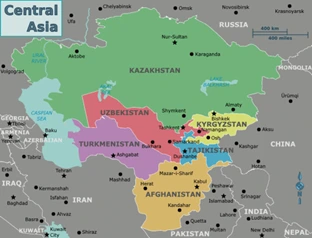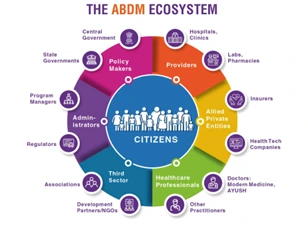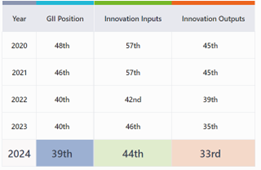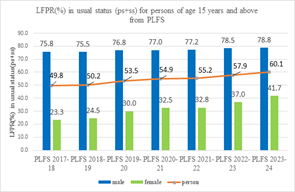Monday, 30th September 2024
India and Uzbekistan signed Bilateral
Why in the news?
- Recently, signing of the BIT between India and Uzbekistan will promote economic cooperation and create a more robust and resilient investment environment.

About BIT:
- A BIT is a reciprocal agreement according to the investment protection of citizens and companies of one country in another.
- India approved the new Model Bit script in 2015, which replaced the Indian Model Bit, 1993.
- Model text 2015 is used to (re)negotiate BITs and economic chapters of FTAs/ Economic Cooperation Agreements.
Key Features of Model BIT:
- State actions: Treatment similar to that of domestic investors.
- Protection Against Expulsion: Any State limiting its ability to absorb foreign investment in its territory.
- Dispute resolution: Exhausted local solutions before initiating international arbitration.
- Other: business definition based on investment.
India - Uzbekistan relations:
- Economic Relations: India is among top 10 trade partners of Uzbekistan with bilateral trade USD 756.60 million (2023-24).
- Safety and Security Partnerships: Joint Military Exercises "DUSTLIKE"
- Multilateralism: Both countries cooperate in various fields International forums such as the United Nations, G-20, BRICS and SCO.
- Energy Security: Contracted with Uzbekistan to provide Uranium enrichment.
- Education: India Study Centres under “Aid to Eurasia” in 15 universities of Uzbekistan and activated two short term ‘Chair’ by ICCR in Samarkand State University and Tashkent State University .
- People-to-people ties: There's an estimated Indian community of 14,000 in Uzbekistan.
- Connectivity and Transportation: India, Uzbekistan, and Iran are working on utilising Chabahar Port to enhance connectivity with Afghanistan and Central Asia, bypassing Pakistan.
- International North-South Transport Corridor (INSTC): Uzbekistan interest in the INSTC, a project that aims to reduce the time and cost of transporting goods between India and Central Asia.
|
UPSC Civil Services Examination Previous Year Question (PYQ) Prelims Q:1 Which of the following has/have shrunk immensely/ dried up in the recent past due to human activities? (2018)
Select the correct answer using the code given below: (a) 1 only (b) 2 and 3 (c) 2 only (d) 1 and 3 Ans: (a) Mains Q:1 A number of outside powers have entrenched themselves in Central Asia, which is a zone of interest to India. Discuss the implications, in this context, of India’s joining the Ashgabat Agreement (2018) |
Source: PIB
Ayushman Bharat Digital Mission (ABDM)
Why in the news?
- Launched on 27th September 2021 with the vision of robust digital health infrastructure, the Ayushman Bharat Digital Mission (ABDM) has a transformative three-year journey.

About the Ayushman Bharat Digital Mission (ABDM):
- Aim: To revolutionise the nation's digital healthcare ecosystem to enhance healthcare accessibility, efficiency, and transparency.
- Key Features of ABDM:
- Unique Health identifier for citizens: A unique Health ABHA ID for every individual establishing a strong and trustworthy identity to store and manage health records.
- Healthcare Professionals Registry (HPR): All healthcare professionals involved in delivery of healthcare services across both modern and traditional systems of medicine.
- Health Facility Registries (HFR): It includes both public and private health facilities including hospitals, clinics, diagnostic laboratories and imaging centres, pharmacies, etc.
- Health Information Exchange and Consent Manager (HIE-CM): Empowers citizens to securely access and share their health records, ensuring that data exchange is driven by informed consent.
- Unified Health Interface (UHI): Facilitates the discovery and delivery of health services, thereby streamlining healthcare interactions and improving service accessibility.
- National Health Claims Exchange (HCX): Standardised the insurance payment ecosystem, simplifying and expediting the claim process.
- Key Initiatives of ABDM (Ayushman Bharat Digital Mission):
- Scan and Share: A QR-based OPD registration service for faster demographic sharing, reducing waiting times from 1 hour to 30 minutes, and saving 2.5 crore man-hours with over 5 crore OPD tokens generated.
- Digital Health Incentive Scheme (DHIS): Introduced in January 2023, it provides up to ₹4 crores in incentives, encouraging public and private sector adoption of digital health practices.
- Microsites for Private Sector Adoption: With 106 operational microsites (target: 100), this initiative facilitates private sector engagement with ABDM.
- End-to-End ABDM Adoption Pilot: Aims to digitise 131 public and private healthcare facilities nationwide to create model ABDM facilities, serving as benchmarks for future efforts.
Achievements of Ayushman Bharat Digital Mission (ABDM):
- Ayushman Bharat Health Accounts (ABHA): Over 67 crore ABHA accounts were created, providing citizens with unique digital health IDs for secure record sharing. More than 42 crore health records have been linked to ABHA, streamlining medical history access.
- Private & Public Sector Integration: 236 private entities including labs, pharmacies, and digital solution providers integrated with ABDM, while public institutions like AIIMS Delhi and AIIMS Bhopal lead OPD registrations. Over 1.3 lakh facilities, including 17,000 private ones, are now ABDM-enabled.
- National Healthcare Providers Registry (NHPR): 3.3 lakh health facilities and 4.7 lakh healthcare professionals registered under NHPR. New portals like the National Medical Register (NMC) and National Dental Register (NDR) enhance professional data management.
Source: PIB
Digital Personal Data Protection Act
Why in the news?
- NITI Aayog opposed certain provisions of the Digital Personal Data Protection Act 2023, and its impact on the Right to Information (RTI) Act 2005.
What is the Digital Personal Data Protection Act (DPDPA) 2023?
- It is a comprehensive privacy and data protection law that provides guidelines on processing, storing and securing personal data.
- It recognises the right of individuals, referred to as data principals, to protect their personal data during the processing of that data for lawful purposes.
- The law culminates a seven-year journey in the K.S. Puttaswamy case ruled that the right to privacy was protected under the Constitution of India in 2017.
- Provisions regarding consent, legitimate uses, breaches, data fiduciary and processor responsibilities, and individuals' rights over their data.
- The law doesn't apply to paper data unless it's digitised or data collected for personal, artistic and journalistic use.
- Fines for non-compliance range from Rs 10,000 for individuals to Rs 2.5 billion for organisations.
- The law is yet to be operationalised, with necessary rules for its implementation still pending.
Key Features of the DPDPA:
- Applicability:
- To an individual, including name, addresses, ID numbers and behavioural information such as location, web history and preferences.
- But it doesn't apply to data made publicly available by an individual or third parties.
- An individual has consented to share is considered protected, but not data indexed by search engines or social media sites.
- Defines data processing:
- It includes how the data is collected, recorded, structured, stored, shared or automatically acted on.
- Barred and applies to all companies that offer goods or services within India, regardless where their headquarters is located.
- Defines responsibilities of specific entities:
- Data fiduciaries are businesses and other organisations that interact with individuals to collect, amend and delete data as requested.
- Significant data fiduciary (SDF): Companies that process large amounts of data may be designated as a SDF and need to:
- Appoint an Indian data protection officer,
- Conduct third-party audits and
- Perform data protection impact assessments.
- Data processors are third-party businesses that can include cloud providers or services in relation to KYC, fraud detection and credit ratings.
Concerns Regarding DPDPA Raised by the NITI Aayog:
- To a section [8(1)(j)] in the RTI Act with such effect that disclosure of personal information about public officials would not be allowed even when these are justified in larger public interest.
- The Ministry of Electronics and Information Technology (MeitY) did not pass the proposed law in its current form as it could weaken the RTI Act.
- The RTI Act was also criticised by the Opposition parties and civil society activists during the consultation period and when the Bill came up for discussion in Parliament.
- However, the MeitY kept the proposed changes to the RTI Act unchanged despite the reservations of NITI Aayog.
- The right to privacy is a fundamental right under the Constitution of India, and should be made available to officers in government institutions as well.
Source: IE
China Shock 2.0
Why in the news ?
- The China shock refers to the economic disruption caused by China's entry into the WTO in 2001, flooding global markets with low-cost goods.
ChinaShock 2.0:
- Chinese exports have taken a new hit amid the slowdown in the domestic economy, creating new challenges for global market businesses.
- This influx is expected to displace workers and increase trade tensions, particularly affecting countries like India, which are heavily dependent on Chinese goods.
Impact on global trade:
- Worker displacement: Many companies around the world face job losses as they struggle to compete with cheap Chinese imports, reminiscent of China’s original shock
- Market volatility: The arrival of Chinese goods has caused price volatility, especially in industries such as steel, where European prices have fallen sharply due to oversupply
- Challenges in emerging markets: The influx of Chinese goods exerts pressure on emerging economies such as Vietnam and Thailand, affecting their balance of trade and productivity
Impact on Indian manufacturing trade:
- Rising Import Dependence: India’s imports from China increased from $10.87 billion in 2005-06 to over $100 billion by 2023-24, affecting regions there jobs
- Job losses: Cheap Chinese goods have led to job losses in the textile industry, where Indian manufacturers are struggling to compete.
- Renewable Energy Challenges: India’s 2030 target is dependent on China for 80% of its solar resources, limiting domestic growth
- Pressure on the steel industry: Rising imports of Chinese steel have prompted local producers to call for anti-dumping duties to ease economic pressure.
- Insecure electronics: India imports more than $12 billion worth of electronics from China, which has fallen sharply at its dependency level despite local manufacturing efforts
Global responses:
- Tariff Impositions: U.S. has imposed heavy tariffs on Chinese goods, including 100% on electric cars and 50% on solar panels to protect domestic infrastructure
- Anti-Dumping Investigations: By 2024, India has introduced more than 30 anti-dumping checks on imports to provide local employment in the protection of industries
- Strengthened trade agreements: Countries seek deeper economic ties with new partners, such as India’s efforts with Japan and Australia to diversify supply chains
- To encourage local production: In India, governments provide tax breaks and subsidies to promote domestic production such as the Production Linked Incentive (PLI) scheme
- Import policies and restrictions: Some countries use Chinese import policies to limit quantities that threaten local markets.
- Supply chain flexibility initiatives: Companies are diversifying their supply chains to reduce their dependence on China, and adopting strategies such as “China Plus One“ to transform global business dynamics.
Future Implications:
- Focus on diversification: To reduce dependence on China, countries should diversify their supply chain and shift production to countries such as Vietnam and India first.
- Resurgence of Domestic Manufacturing: America and other industries. The CHIPS Act aims to boost domestic semiconductor manufacturing, as well as local manufacturing
- Regional trade blocs: Regional trade agreements such as the Regional Economic Partnership in Asia (RCEP) will gain momentum as countries increase regional trade.
- Technology Investment: Increased investment in technology and machinery will increase employment and India will invest in smart manufacturing solutions.
- Shift in Consumer Preferences: A growing preference for locally sourced products will drive demand for domestic goods, as seen with “Made in America” trends.
- Geopolitical Realignments: Trade policies will increasingly reflect geopolitical considerations, with the EU strengthening ties with Indo-Pacific nations to counter China’s influence.
Source: IE
Pinaka Multi-Barrel Rocket Launch
Why in the news ?
- Recently, the Indian Army is modernising its artillery by enhancing range and precision through indigenous systems like the Pinaka Rocket.
What about the Pinaka Rocket:
- Multi-Barrel Rocket Launcher (MBRL): Pinaka can fire 12 rockets in 44 seconds, with multi-launch capability for varied ranges and warheads.
- MLRS Examples: Indian Pinaka, Russian Grad, and American HIMARS.
- Origin: Developed by DRDO in the 1980s to replace Russian Grad systems.
- First Use: Successfully deployed in the 1999 Kargil War.
- Versions & Range:
- Mk-I: 40 km
- Mk-I Enhanced: 60 km
- Mk-II: 90 km, with integrated satellite navigation for better accuracy.
- Upcoming Variants: Mk-III will have ranges of 120 km and up to 300 km.
Source: TH
Paryatan Mitra And Paryatan Didi Initiative
Why in the news ?
- Recently, the Union Ministry of Tourism has launched a national responsible tourism initiative titled Paryatan Mitra and Paryatan Didi.
About the Paryatan Mitra and Paryatan Didi Initiative:
- Objective: Enhance tourists' experience by introducing ‘tourist-friendly’ locals who serve as proud ambassadors and storytellers.
- Vision: To create a more welcoming and memorable experience through locals who embody the spirit of "Incredible India."
- Pilot Destinations: Orchha, Gandikota, Bodh Gaya, Aizawl, Jodhpur, Sri Vijaya Puram.
- Features:
- Focuses on training women and youth to develop tourism products like heritage walks, food tours, and homestays.
- Based on the ‘Athithi Devo Bhava’ philosophy.
- Training covers tourism, digital literacy, and digital tools to boost employment and visibility for local tourism.
Source: AIR
Bharat 6G Alliance
Why in the news ?
- Recently, the union telecom minister has initiated a meeting with the seven working groups of the Bharat 6G Alliance, signalling the future arrival of 6G in India.
About the Bharat 6G Alliance:
- Objective: Achieve universal, affordable connectivity and position India as a telecom leader.
- Composition: A collaboration of public and private sectors, academia, research institutions, and standards bodies to lead 6G development in India.
- Global Collaboration: Forms coalitions with international 6G alliances to promote knowledge exchange.
- Goals:
- Establish India as a global supplier of affordable 5G, 6G, and future telecom solutions.
- Facilitate Indian startups and companies in the design, development, and deployment of 6G technologies.
- Enable market access for Indian telecom products to position India as a global 6G leader.
Source: ET
100 Years of Self-Respect Movement (SRM)
Why in the news ?
- The Self-Respect Movement (SRM) celebrates its centenary in 2024, having been founded in 1925 by S. Ramanathan and led by E.V. Ramasamy (Periyar).
About SRM:
- The movement, called "Suyamariyathai" (Self-Respect), aimed to secularise and modernise Tamil society as part of the Dravidian Movement.
- Periyar emphasised self-respect, tied to:
- Samathuvam (Equality),
- Suthanthiram (Freedom),
- Samadharmam (Communism).
Key Contributions:
- Self-Respect Marriages: Eliminated Brahmin priests and religious rituals; legalised in 1967.
- Women's Rights: Supported widow remarriage, divorce, property rights, abortion, and contraception.
- Inter-Caste Marriages: Promoted equality by challenging patriarchal norms controlling marriage choices.
Source: TH
India’s Invisible Slum Crisis
Context:
- Lack of census data has compounded the problem, raising questions on the government’s “commitment” to ‘sabka saath, sabka vikas’.
What is a Slum?
- The UN defines ‘slum’ as one or a set of people living in the same house in an urban area who lack one or more facilities, i.e., secure tenure, durable housing, sufficient living space, and access to improved water and sanitation facilities.
- India’s slum-dwelling population increased from 27.9 million in 1981 to 65.5 million in 2011, accounting for about 17.37% of the total urban population in 2011 (Census 2011).
Characteristics of slum
- High population density
- Lack of access to basic services like clean water and sanitation
- Poor living conditions and lack of security of tenure
- Limited or no access to education and healthcare facilities
- Poverty, high unemployment and informal economy
- High incidence of deviant behaviour, i.e. crime, juvenile delinquency, drug usage, suicide, ill legitimacy and family maladjustments.
Factors for the growth of slums in India:
- Rural-Urban Migration: Large-scale migration due to lack of employment and agricultural stagnation in rural areas. In 2020, 34% of India's population was urban, a significant increase driven by rural migrants.
- Housing Shortage: India faces a shortage of 29 million urban housing units (2018 data), forcing many to live in informal settlements.
- Unemployment and Informal Economy: Around 81% of urban workers are in informal jobs, leading to low incomes and inability to afford formal housing.
- Urbanisation: India’s urban population grew by 31.8% between 2001 and 2011, outpacing the development of affordable housing and infrastructure.
- Poor Urban Planning: Lack of adequate urban planning has resulted in unplanned settlements. As per the Census 2011, 13.7 million households were living in slums.
- Inadequate Infrastructure: Insufficient public utilities like water, sanitation, and electricity in growing cities push low-income groups into slums.
- Land Tenure Issues: Unclear property rights and high real estate prices force low-income groups to settle in unauthorised areas.
- Policy Gaps: Slum redevelopment programs, such as the PMAY, have not met demand, with over 12 million urban homes still needed (2023).
- Population Growth: India's urban population is projected to increase by 416 million between 2018 and 2050, further straining resources and increasing slum growth.
Adverse impacts of slums:
- Health Hazards: Lack of clean water/sanitation leads to high rates of waterborne diseases; 700,000 deaths annually from diarrheal diseases (WHO).
- Poverty and Unemployment: 22% of India's population lives below the poverty line; slum areas face higher unemployment and reliance on informal jobs (NITI Aayog, 2018).
- Social Inequality: 43% of urban households in slums experience discrimination based on living conditions (National Sample Survey, 2018).
- Environmental Degradation: Urban slums generate 60 million tons of solid waste annually; poor drainage exacerbates flooding and pollution (World Bank).
- Crime and Violence: Higher crime rates in slums; urban areas see increased violent crimes linked to gang violence and drug abuse (UNODC).
- Inadequate Infrastructure: 40% of urban Indians live in slums with limited access to essential services like sanitation and electricity (Ministry of Housing and Urban Affairs).
- Impact on Urban Planning: 11% of urban India lives in slums, complicating effective urban planning efforts (Ministry of Urban Development).
- Mental Health Issues: Mental health problems are 30% more prevalent among slum residents due to stressful living conditions.
- Impact on Education: Only 30% of children in urban slums attend school; high dropout rates due to child labour (UNICEF).
Challenges in slum rehabilitation:
- Limited access to financial resources: Urban poor lack formal financial resources to help them purchase new homes or maintain a new life in a new housing unit. Therefore, most of the newly constructed housing units are not affordable.
- Lack of land for housing: Excess control over land creates an artificial urban land shortage, leading to urban sprawl and corruption in land licensing. Further, non-marketable state-owned entities in the heart of cities limit the amount of available land for housing.
- Regulatory constraints: Development projects in urban areas are subject to a long approval process from both state and central levels, which postpones tasks.
- Vote bank politics: Politicians prioritise short-term electoral gains by making promises of welfare schemes to slum dwellers, often neglecting long-term urban planning and infrastructure development.
- Political deprivation: Slum dwellers often lack political representation and are excluded from decision-making, limiting their ability to advocate for their rights and improve living conditions.
Government incentives:
- Pradhan Mantri Awas Yojana (PMAY): Aims to provide affordable housing to the urban poor; as of 2023, over 1.1 crore houses have been sanctioned under the scheme.
- Subsidy for Solar Power: The government offers a 30% subsidy on the installation of solar panels for residential use, encouraging renewable energy adoption.
- Mahatma Gandhi National Rural Employment Guarantee Act (MGNREGA): Guarantees 100 days of wage employment in a financial year to every rural household; over 1.2 crore households benefited in FY 2022-23.
- Start-up India Initiative: Offers tax exemptions for 3 years to eligible start-ups; over 75,000 start-ups registered since its launch in 2016.
- Pradhan Mantri Fasal Bima Yojana (PMFBY): Provides crop insurance to farmers; as of 2023, over 6 crore farmers enrolled, covering crops worth ₹1.6 lakh crore.
- Goods and Services Tax (GST) Incentives: Small businesses with an annual turnover below ₹1.5 crore benefit from a 1% composition scheme for simplified tax payments.
- Atmanirbhar Bharat Package: A stimulus of ₹20 lakh crore to boost the economy during COVID-19; included incentives for various sectors, with a focus on MSMEs.
- National Skill Development Mission: Targets skill development for youth; by 2023, over 1.5 crore individuals trained through various skill development initiatives.
- Digital India Initiative: Incentives for the digital transformation of government services; over 1.4 lakh Common Service Centers (CSCs) operational, providing digital services
Source: DTE
Share the article
Edukemy’s Current Affairs Quiz is published with multiple choice questions for UPSC exams
MCQ
Get Latest Updates on Offers, Event dates, and free Mentorship sessions.

Get in touch with our Expert Academic Counsellors 👋
FAQs
UPSC Daily Current Affairs focuses on learning current events on a daily basis. An aspirant needs to study regular and updated information about current events, news, and relevant topics that are important for UPSC aspirants. It covers national and international affairs, government policies, socio-economic issues, science and technology advancements, and more.
UPSC Daily Current Affairs provides aspirants with a concise and comprehensive overview of the latest happenings and developments across various fields. It helps aspirants stay updated with current affairs and provides them with valuable insights and analysis, which are essential for answering questions in the UPSC examinations. It enhances their knowledge, analytical skills, and ability to connect current affairs with the UPSC syllabus.
UPSC Daily Current Affairs covers a wide range of topics, including politics, economics, science and technology, environment, social issues, governance, international relations, and more. It offers news summaries, in-depth analyses, editorials, opinion pieces, and relevant study materials. It also provides practice questions and quizzes to help aspirants test their understanding of current affairs.
Edukemy's UPSC Daily Current Affairs can be accessed through:
- UPSC Daily Current Affairs can be accessed through Current Affairs tab at the top of the Main Page of Edukemy.
- Edukemy Mobile app: The Daily Current Affairs can also be access through Edukemy Mobile App.
- Social media: Follow Edukemy’s official social media accounts or pages that provide UPSC Daily Current Affairs updates, including Facebook, Twitter, or Telegram channels.




